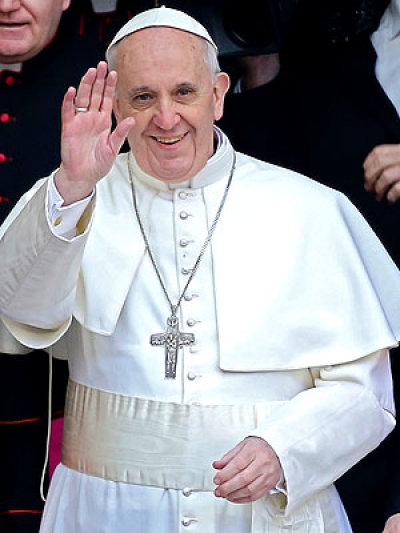Just how vast is the legacy of the papacy, stretching across millennia and influencing the lives of billions? The papacy, a continuous line of leadership within the Catholic Church, boasts a history of over 2,000 years, marked by the tenure of 266 individuals who have held the title of Pope, each leaving an indelible mark on the course of history.
The death of Pope Francis, elected in 2013, marked the end of an era and served as a poignant reminder of the enduring nature of this ancient institution. His passing initiates the intricate process of electing his successor, a tradition that has been meticulously observed throughout the centuries. The historical narrative surrounding the papacy is rich with detail, intrigue, and significance, deserving of a closer examination to truly appreciate its depth.
| Attribute | Details |
|---|---|
| Name | Jorge Mario Bergoglio (Pope Francis) |
| Birth Date | December 17, 1936 |
| Place of Birth | Buenos Aires, Argentina |
| Nationality | Argentinian |
| Education | Master of Arts in Chemistry, Philosophical and Theological studies |
| Religious Order | Society of Jesus (Jesuits) |
| Priesthood Ordination | December 13, 1969 |
| Episcopal Ordination | June 27, 1992 |
| Cardinalate | Created Cardinal by Pope John Paul II on February 21, 2001 |
| Election as Pope | March 13, 2013 |
| Papal Name | Francis |
| Predecessor | Benedict XVI |
| Successor | (To be determined) |
| Key Accomplishments & Actions | Emphasis on social justice, poverty, environmental protection, and interfaith dialogue. Reform of Vatican finances and governance. |
| Notable Writings/Speeches | Encyclicals Evangelii Gaudium, Laudato Si', Fratelli Tutti. |
| Impact | Increased global awareness of social and environmental issues. Revitalization of the Catholic Church's engagement with the modern world. |
| Quote | If we lose contact with reality, we lose contact with God. |
| Reference | Vatican Biography |
Delving into the historical record reveals that there have been 266 popes throughout the Catholic Church's existence. This number, a consistent figure recognized by the Vatican, includes Pope Francis. While some sources cite 267, this is often due to the historical anomaly of Stephen II, who was elected but died before being consecrated.
The lineage of the papacy stretches back to Saint Peter, considered the first among the apostles and the first Bishop of Rome. The current Pope, Francis, follows a direct line of succession that has been unbroken for centuries, each pontiff adding their influence and perspective to the Church's mission. The papacy, therefore, is not just a leadership position; it is a continuation of a tradition.
The choice of the name Francis by Pope Francis was significant, as there has been only one pope before him to adopt this name. This naming convention holds great meaning, as it draws parallels to the legacy and influence of Francis of Assisi, the patron saint of the poor and the environment.
Examining the list of popes reveals a fascinating tapestry of figures, some whose names are familiar and others less so. The role of the Pope evolved over time, adapting to the prevailing social, political, and cultural dynamics of each era. The Church's structure, administrative practices, and theological pronouncements were influenced by the personalities of its leaders, leaving unique legacies that shaped the institution's course.
The process of selecting a new pope, one of the world's most important ceremonial events, is steeped in tradition and secrecy. The College of Cardinals, comprised of senior members of the Church, meets in the Sistine Chapel to cast their ballots. The election is conducted behind closed doors, with the outcome signified by either black or white smoke billowing from the chimney of the chapel. This process ensures that the new pontiff is elected with the utmost solemnity and respect.
The historical context reveals that popes originated in various regions, with many hailing from Europe. Pope Francis, however, stands out as the first pope from the Americas. His election marked a historic shift, as it reflected the Church's growing global presence and its commitment to the diverse communities it serves.
The Church of San Marco in Rome stands as a testament to the early papacy, rumored to be one of the churches founded by an early pontiff. This historic landmark is a testament to the enduring nature of the Catholic Church, connecting the modern era to its origins.
Each pope, from St. Peter onward, has faced unique challenges and opportunities. The papacy has witnessed periods of both strength and adversity. The Church has, at times, played a central role in political affairs. During other times, it has faced persecution and internal divisions. These challenges have shaped the Church's evolution, providing valuable experience to each successive leader.
The influence of the papacy extends far beyond religious matters. The popes have shaped art, literature, and architecture. They have influenced political thought and social reforms. The Vatican, the smallest independent state in the world, stands as a center of cultural and historical significance, reflecting the legacy of the papacy.
The ongoing study of the papacy provides insights into the evolution of religious thought, the dynamics of power, and the complexities of human history. The legacy of Pope Francis, and all the popes before him, continues to influence and impact the lives of millions around the world.
The story of the papacy is far from finished, as it continues to unfold. The election of a new pope marks not just the end of one papacy but also the dawn of a new era. Each new pope will carry on the responsibilities of leading a global Church, guiding it in its mission, and preserving its ancient traditions.
The impact of the papacy reaches across geographical boundaries, inspiring faith, fostering dialogue, and promoting peace and justice. The journey of the Catholic Church, guided by its popes, remains a vital part of the ongoing human narrative.



